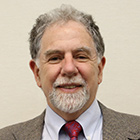Thomas E. Mallouk

Satellite PI
MANA Principal Investigator (PI)
MANA Principal Investigator (PI)
Affiliation:
- University of Pennsylvania Department of Chemistry
- Mallouk Research Group
- Nanoscale Chemistry
Specialty:
Academic degree:
Educational & Research History
| 2019 | - | Present |
Vagelos Professor in Energy Research, University of Pennsylvania
|
| 2016 | - | 2019 |
Evan Pugh University Professor of Chemistry, Biochemistry and Molecular Biology, Physics, and Engineering Science and Mechanics, The Pennsylvania State University
|
| 2016 | - | 2018 |
Head, Department of Chemistry, Pennsylvania State University
|
| 2013 | - | 2017 |
Evan Pugh University Professor of Chemistry, Biochemistry and Molecular Biology, and Physics, Pennsylvania State University
|
| 2010 | - | 2013 |
Evan Pugh Professor of Chemistry and Physics, Pennsylvania State University
|
| 1998 | - | 2010 |
DuPont Professor of Materials Chemistry and Physics, Pennsylvania State University
|
| 1993 | - | 1998 |
Professor of Chemistry, Pennsylvania State University
|
| 1991 | - | 1993 |
Professor of Chemistry, The University of Texas at Austin
|
| 1989 | - | 1991 |
Associate Professor of Chemistry, The University of Texas at Austin
|
| 1985 | - | 1989 |
Assistant Professor of Chemistry, The University of Texas at Austin
|
Research History
Thomas E. Mallouk received his bachelor’s degree in Chemistry from Brown University, where he did undergraduate research with Aaron Wold. He worked in industry for two years and was a Ph.D. student from 1979-1983 with Neil Bartlett at the University of California, Berkeley. Following postdoctoral work with Mark Wrighton at MIT (1983-85) he held faculty positions at the University of Texas at Austin (1985-93) and at Penn State University (1993-2019). He is currently Vagelos Professor in Energy Research in the Department of Chemistry at the University of Pennsylvania. His research focuses on the synthesis of inorganic materials and their application to solar and electrochemical energy conversion, nano- and micro-robotics, surface chemistry and electrocatalysis, low dimensional physical phenomena, and environmental remediation. In the 1980s and 1990s, Mallouk and his students developed layer-by-layer techniques for assembling inorganic materials, and topochemical reactions for interconverting inorganic materials in the solid state. That work led to studies of artificial photosynthesis in microporous and lamellar materials, resulting in the first molecule-based non-sacrificial systems for hydrogen evolution with visible light in 1991, and for overall water splitting in 2009. Mallouk and his students developed high throughput methods for electrocatalyst discovery, as well as bipolar membranes, and have studied them for efficient electrochemical energy conversion in electrolyzers, fuel cells, flow batteries, and lithium ion batteries. In 2004, Mallouk and his colleague Ayusman Sen created the first chemically powered microswimmers and micropumps, initiating a very active field of research on artificial swimmers as microrobots and active matter. Mallouk is the author of 450 publications, including a few good ones, and has a Web of Science h-index of 115. He is a Fellow of the American Chemical Society, a member of the National Academy of Sciences and of the American Academy of Arts and Sciences, and an Associate Editor of the Journal of the American Chemical Society.
Selected Papers
-
3D Steerable, Acoustically Powered Microswimmers for Single-Particle Manipulation
L. Ren, N. Nama, J. M. McNeill, F. Soto, Z. Yan, W. Liu, W. Wang, J. Wang, and T. E. Mallouk
Sci. Adv., 5: eaax3084 (2019).
-
Design and architecture of a stable solid-electrolyte interphase for the lithium metal battery anode using a reactive polymeric composite
Y. Gao, Z. Yan, J. L. Gray, X. He, T. Chen, Q. Huang, Y. C. Li, H. Wang, S. H. Kim, T. E. Mallouk, and D. Wang
Nature Mater. 18, 384-389 (2019)
-
The balance of electric field and interfacial catalysis in promoting water dissociation in bipolar membranes
Z. Yan, L. Zhu, Y. C. Li, R. Wycisk, P. N. Pintauro, M. A. Hickner, and T. E. Mallouk
Energy Environ. Sci., 11, 2235-2245 (2018)
-
Charge transfer stabilization of late transition metal oxide nanoparticles on a layered niobate support
M. E. Strayer, T. P. Senftle, J. P. Winterstein, N. M. Vargas-Barbosa, R. Sharma, R. M. Rioux, M. J. Janik, and T. E. Mallouk
J. Am. Chem. Soc. 137, 16216-16224 (2015)
-
Non-oxidative intercalation and exfoliation of graphite by Bronsted acids
N. I. Kovtyukhova, Y. Wang, A. Berkdemir, R. Cruz-Silva, M. Terrones, V. H. Crespi and T. E. Mallouk
Nature Chem., 6, 957-963 (2014)
-
Acoustic propulsion of nanorod motors inside living cells
W. Wang, S. Li, L. Mair, S. Ahmed, T. J. Huang, and T. E. Mallouk
Angew. Chem. Int. Ed., 53, 3201-3204 (2014)
-
Self-powered enzyme micropumps
S. Sengupta, D. Patra, I. O. Rivera, A. Agrawal, K. K. Dey, S. Shklyaev, T. E. Mallouk, and A. Sen
Nature Chem., 6, 415-422 (2014)
-
Substrate catalysis enhances single enzyme diffusion through self electrophoretic force generation
H. S. Muddana, S. Sengupta, T. E. Mallouk, A. Sen, and P. J. Butler
J. Am. Chem. Soc., 132, 2110-2111 (2010)
-
Visible light water splitting using dye-sensitized oxide semiconductors
W. J. Youngblood, S.-H. A. Lee, K. Maeda, and T. E. Mallouk
Acc. Chem. Res., 42, 1966-1972 (2009)
-
Powering nanorobots
T. E. Mallouk and A. Sen
Scientific American, May 2009, pp. 72-77
-
Combinatorial Electrochemistry: A Highly Parallel, Optical Screening Method for the Discovery of Better Electrocatalysts
E. Reddington, A. Sapienza, B. Gurau, R. Viswanathan, S. Sarangapani, E. S. Smotkin, and T. E. Mallouk
Science, 280, 1735-1737 (1998)

